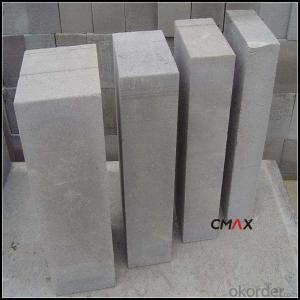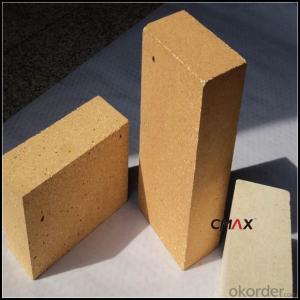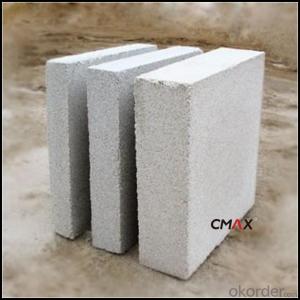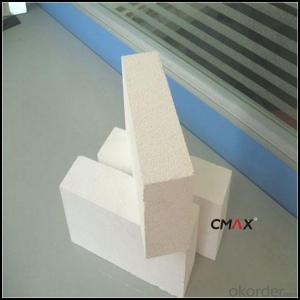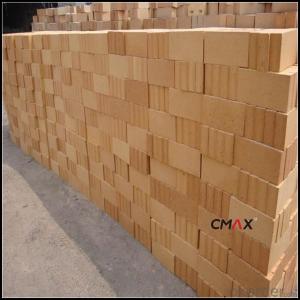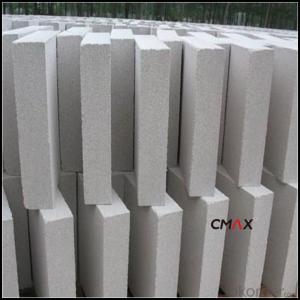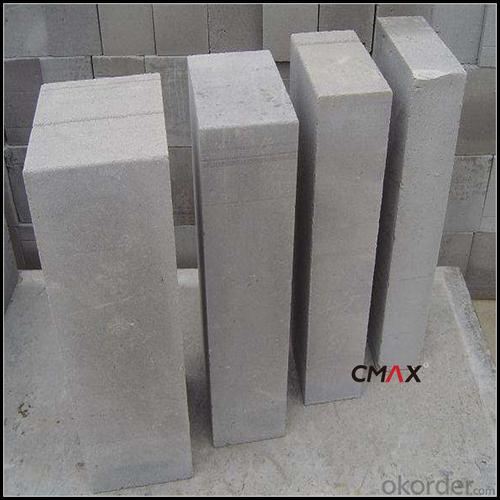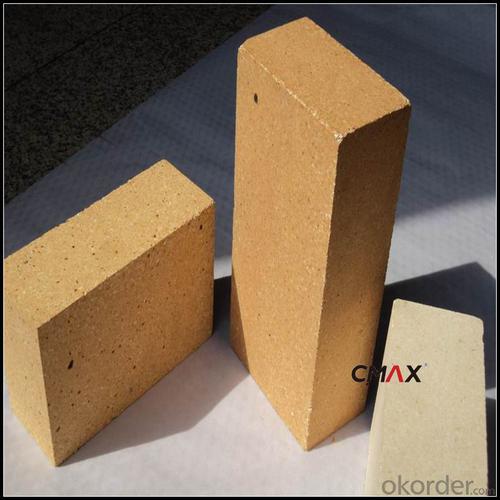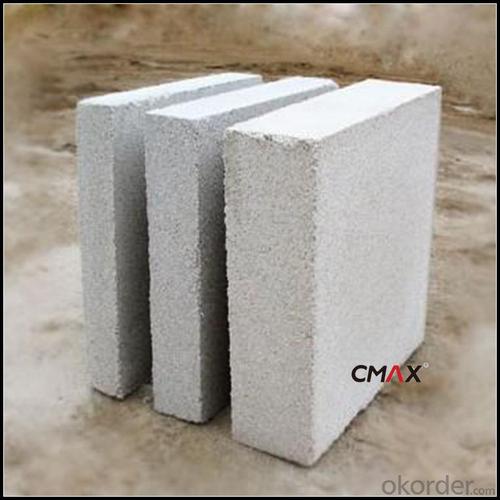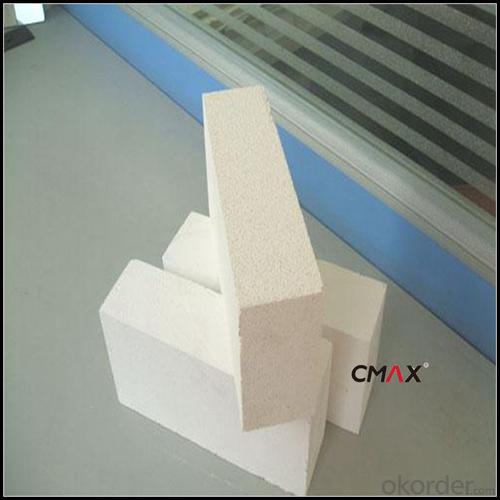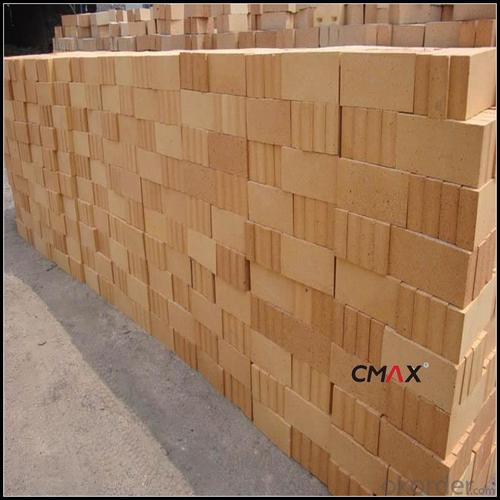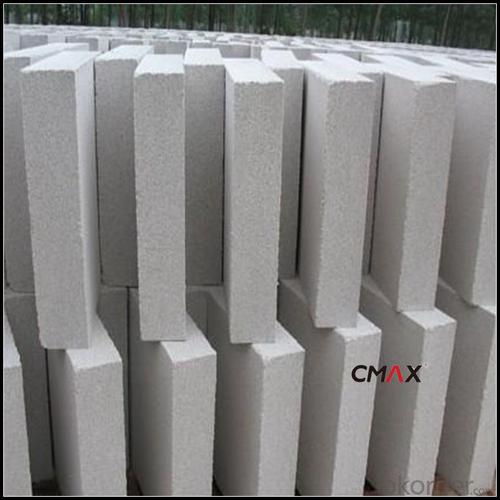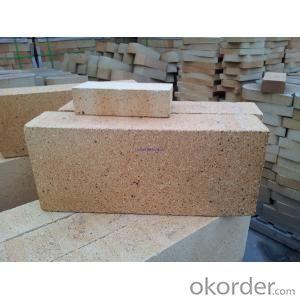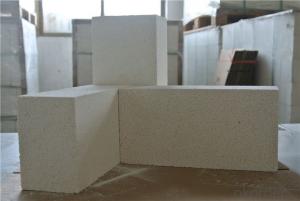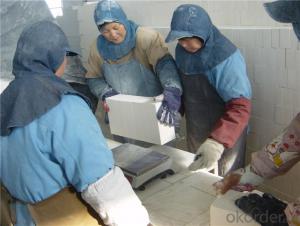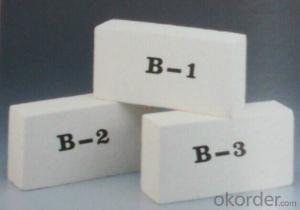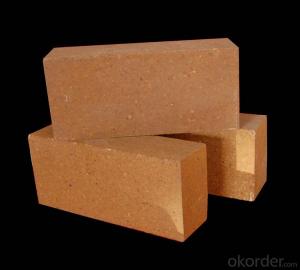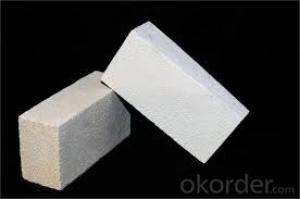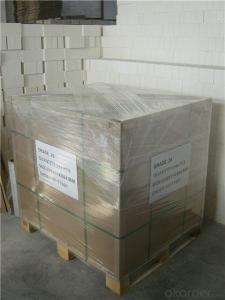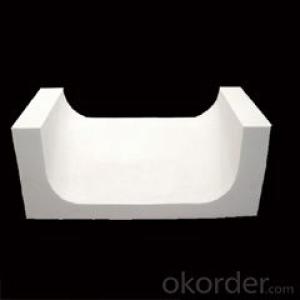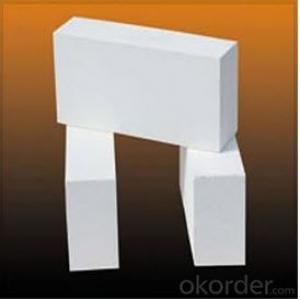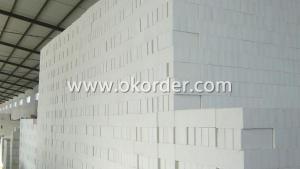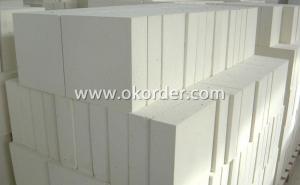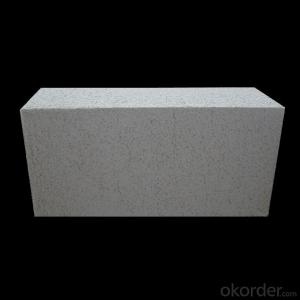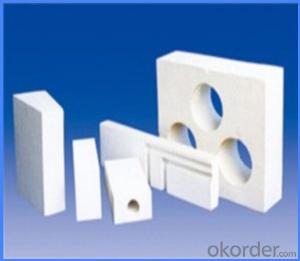Insulating Fire Brick - Refractory Heat Insulation Brick
- Loading Port:
- China main port
- Payment Terms:
- TT OR LC
- Min Order Qty:
- 2 m.t
- Supply Capability:
- 2000 m.t/month
OKorder Service Pledge
OKorder Financial Service
You Might Also Like
Insulating Brick
CMAX insulating firebricks are classified under temperature between 1300℃ to 1700℃, manufactured from high purity alumina clay.
1.High Alumina Brick used for cement kiln, otary kiln and other high temperature kiln.
2,Magnesia Carbon Brick used for converter furnace,ladle and electric furnace.
3,Insulating Bricks used for insualting layer for high temperature furnce
4,Nozzle Bricks slide gate brick that can be used for tundish and ladle
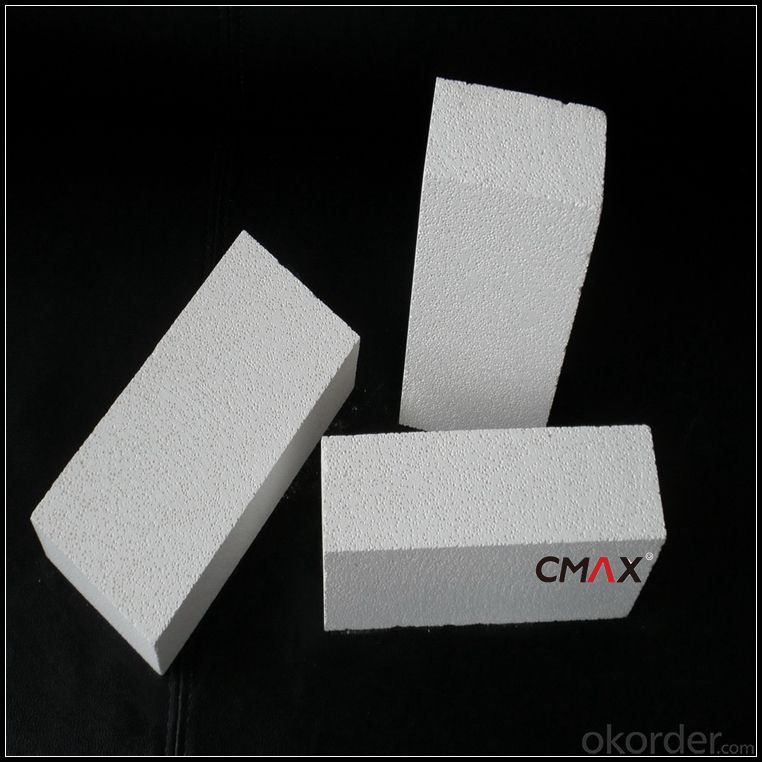
Insulating Brick Features
1.Low thermal conductivity, low thermal capacity, low impurity content
2.High strength
3.Good thermal shock resistance, Corrosion atmosphere resistance
4.High dimensional accuracy
5.Low reheat shrinkage
Insulating Brick Application
glass industries iron & steel industries
ceramics industries non-ferrous metals industries
electrolytic Aluminum industries power generation industries
Heat surface fireproof lining other fire-proof back lining
Process Of Refractory Heat Insulation BrickRaw material to factory→checkout→burdening→stirring→mixing→taking out the raw material
→transfer→enter into mould→press machine extrusion→going out the mould→stoving→going into the furnace
→firing→stopping burn→cooling→open the furnace door→going out the furnace→checkout
→packing→qualified product→putting in storage→sale
Insulating Brick Data Sheet
Classification Temperature (℉/℃) | 3000/1650 |
Bulk Density (g/cm3 ) | ≤1.0 |
Thermal Conductivity | |
800℃, W/m.K | ≤0.39 |
1000℃, W/m.K | ≤0.43 |
1200℃, W/m.K | ≤0.48 |
Reheating Linear Change (%) | 1550℃×12h |
≤0.9 | |
Chemical Composition (%) | |
Al2O3 | ≥75 |
Fe2O3 | ≤0.5 |
Packaging & Shipping
Packaging Details:Be packed in fumigated wooden pallets
Delivery Detail: 30 days after order

Our Services
Optimum solution and product supply of refractories for high temperature industries, such as iron steel, non-ferrous, petrochemical and building materials.
Engineering design, contract and consult for refractories, and civil architecture design.
Research, development, manufacture and sale of superhard materials.
R&D, manufacture and sale of special packing materials for export.
Inspection, supervision and arbitration of refractories.
Consultation and services in refractories information.
Training and cultivation of high-level talents in refractories profession
Sales Network

Company Information
CNBM (China National Building Material) Group is the largest comprehensive building materials group in China that in integrate scientific research, manufacturing and logistics into one entity. The largest building materials and equipment specialists in China. Upon State Council approval, today CNBM owned more than 300 subordinate manufacturing factories and servicing companies. There are 6 fully owned public listed companies and 11 partially owned with substantial shares public listed companies. In many of these fields, CNBM is playing the leading role in the building industry in the country.
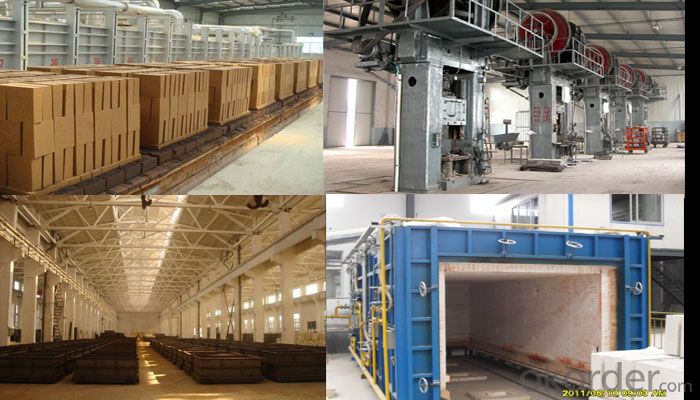
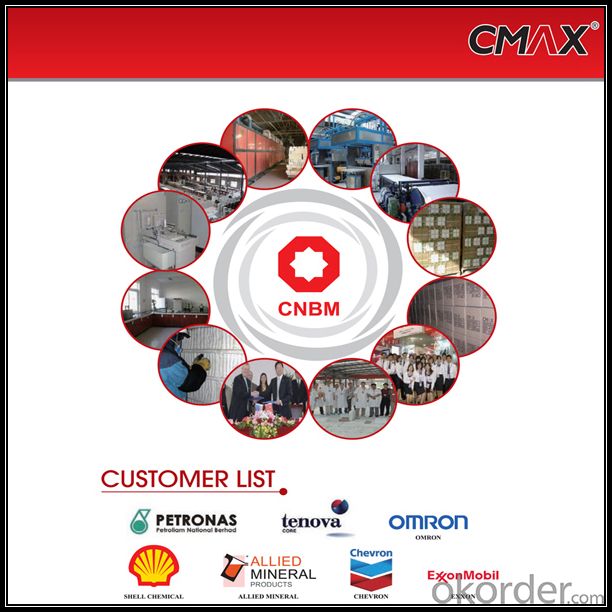
FAQ
1. Which products do you have?
We have all kinds of refractory brick, castable, mortar, cement, ceramic fiber products, etc.
Or you could browse our products to choose what you need.
2. Can you give me a brief introduction of the application of your products?
We are mainly specializing in the refractory materials in iron and steel, cement, glass, ceramics, petrochemical, electric power Industry, etc.
3. If I need your offer, what information do you need?
In order to choose suitable products, it will be appreciated to provide us the information, such us specification, technical data, order quantity, products application etc. If any question, please contact us freely.
- Q: Refractory bricks, burner bricks, insulation bricks? Is it a kind of thing?
- The burner brick is heavy brick, the use temperature is higher, the insulating brick is light brick, the use temperature is lower than the heavy brick.
- Q: Do insulating fire bricks have a high insulating efficiency?
- Yes, insulating fire bricks have a high insulating efficiency. These bricks are designed to have low thermal conductivity, which means they are highly effective at preventing heat transfer. This property allows them to effectively insulate against high temperatures and retain heat within the desired area. Insulating fire bricks are commonly used in applications such as kilns, furnaces, and ovens, where maintaining high temperatures and preventing heat loss is crucial. Their high insulating efficiency helps to reduce energy consumption and improve overall heating efficiency.
- Q: What are the new types of building brick materials?
- Sintered silt insulation brick, steam block, light building block, hollow clay brick, etc..
- Q: What is the recommended curing time for insulating fire bricks?
- The curing time for insulating fire bricks can vary based on factors like brick type, application, and manufacturer instructions. Generally, it is recommended to allow at least 24 to 48 hours for curing. This enables proper drying and hardening, ensuring stability and performance in high-temperature settings. To achieve optimal results, it is crucial to adhere to the manufacturer's guidelines and recommendations for curing time. Furthermore, factors like humidity, temperature, and ventilation can impact the curing process, so it is essential to consider them when determining the appropriate curing time for insulating fire bricks.
- Q: Do insulating fire bricks have any impact on indoor air quality?
- Insulating fire bricks, also known as refractory bricks, find primary application in high-temperature scenarios like fireplaces, kilns, and furnaces. These bricks are designed to endure extreme heat and provide insulation, effectively blocking heat transfer to surrounding areas. In relation to indoor air quality, insulating fire bricks do not directly affect it. Because insulating fire bricks are composed of materials such as clay, alumina, and silica, they are generally inert and do not emit any harmful substances into the air under normal temperatures. Nevertheless, it is worth noting that the manufacturing process may involve certain chemicals or additives that, if not properly regulated or controlled, could potentially impact air quality. Furthermore, indoor air quality can be indirectly influenced by the installation and maintenance of insulating fire bricks. In the event of incorrect installation or damage over time, cracks or gaps may form in the bricks, allowing the escape of harmful gases or particulate matter. In such cases, it is crucial to promptly repair or replace damaged bricks to ensure insulation integrity and prevent any negative impact on indoor air quality. Moreover, the utilization of insulating fire bricks in fireplaces or wood-burning stoves can indirectly impact indoor air quality. When operating these devices, smoke, particulate matter, and potentially harmful gases may be released into the air. Proper ventilation and the use of high-quality flue systems are essential to minimize the impact on indoor air quality when utilizing such appliances. In conclusion, insulating fire bricks themselves do not directly affect indoor air quality. However, various factors such as the manufacturing process, installation, and maintenance should be considered to ensure that these bricks do not contribute to any degradation of the air we breathe.
- Q: Are insulating fire bricks resistant to high-velocity gases?
- Yes, insulating fire bricks are resistant to high-velocity gases. These bricks are specifically designed to withstand extreme temperatures and are often used in applications where high-velocity gases are present, such as in furnaces and kilns. Their dense and non-porous structure helps to prevent gas penetration, making them an ideal choice for insulation in such environments.
- Q: The difference between ordinary and diatomite brick refractory brick
- Insulation products made from diatomaceous brick and porous diatomite. The main raw material is natural porous diatomite, and then a small amount of clay and fuel are added. The volume density of diatomite brick was 0.7g/cm3, compressive strength at room temperature is 1 ~ 2MPa, the coefficient of thermal conductivity at 400 C for 0.13 ~ 0.20W/ (M - K), the apparent porosity is greater than 70%, the coefficient of thermal expansion (1280 degrees) 0.9 x 10 - 6 DEG -1, refractoriness is greater than 1250 DEG C. Mainly used in industrial kilns and other thermal equipment, thermal pipes insulation materials, generally withstand the hot surface temperature of about 1000 degrees celsius. Mainly used in industrial kilns and other thermal equipment, thermal pipes insulation materials, generally withstand the hot surface temperature of about 1000 degrees celsius.
- Q: What are the dimensions and sizes available for insulating fire bricks?
- Insulating fire bricks are available in a variety of dimensions and sizes to suit different applications and requirements. The most common dimensions for insulating fire bricks are 9" x 4.5" x 2.5" and 9" x 4.5" x 3". These sizes are suitable for most standard industrial and residential applications. However, there are also other sizes available for specific needs. For instance, thinner insulating fire bricks measuring 9" x 4.5" x 1.25" or thicker ones measuring 9" x 4.5" x 4.5" may be used in certain specialized applications. These variations in size allow for flexibility and customization to meet specific insulation requirements. It is important to note that insulating fire bricks can also be cut or shaped to fit specific dimensions if needed. This flexibility in customization allows for precise fitting and installation in various projects. Ultimately, the dimensions and sizes of insulating fire bricks depend on the specific needs and requirements of the project. Consulting with a supplier or manufacturer can help determine the most suitable dimensions and sizes for your insulation needs.
- Q: Are insulating fire bricks suitable for use in thermal power plants?
- Yes, insulating fire bricks are suitable for use in thermal power plants. Insulating fire bricks are designed to have low thermal conductivity, which means they can effectively retain heat and prevent heat loss. In thermal power plants, where high temperatures are generated, insulating fire bricks can be used as linings for furnaces, boilers, and other equipment to provide thermal insulation and increase energy efficiency. Additionally, these bricks are resistant to high temperatures and can withstand thermal shocks, making them ideal for use in environments with extreme heat. By using insulating fire bricks in thermal power plants, operators can reduce heat loss, increase the overall efficiency of the plant, and improve the durability and lifespan of the equipment.
- Q: Are insulating fire bricks suitable for use in the construction of smelters?
- Yes, insulating fire bricks are suitable for use in the construction of smelters. Insulating fire bricks are designed to withstand high temperatures and provide excellent insulation properties, making them ideal for applications such as smelters. They have low thermal conductivity, meaning they can effectively retain heat and reduce energy loss during the smelting process. Additionally, insulating fire bricks are resistant to thermal shock, which is crucial in smelting operations where rapid temperature changes are common. Their high heat resistance and insulation capabilities make insulating fire bricks a reliable choice for constructing smelters.
Send your message to us
Insulating Fire Brick - Refractory Heat Insulation Brick
- Loading Port:
- China main port
- Payment Terms:
- TT OR LC
- Min Order Qty:
- 2 m.t
- Supply Capability:
- 2000 m.t/month
OKorder Service Pledge
OKorder Financial Service
Similar products
Hot products
Hot Searches
Related keywords
